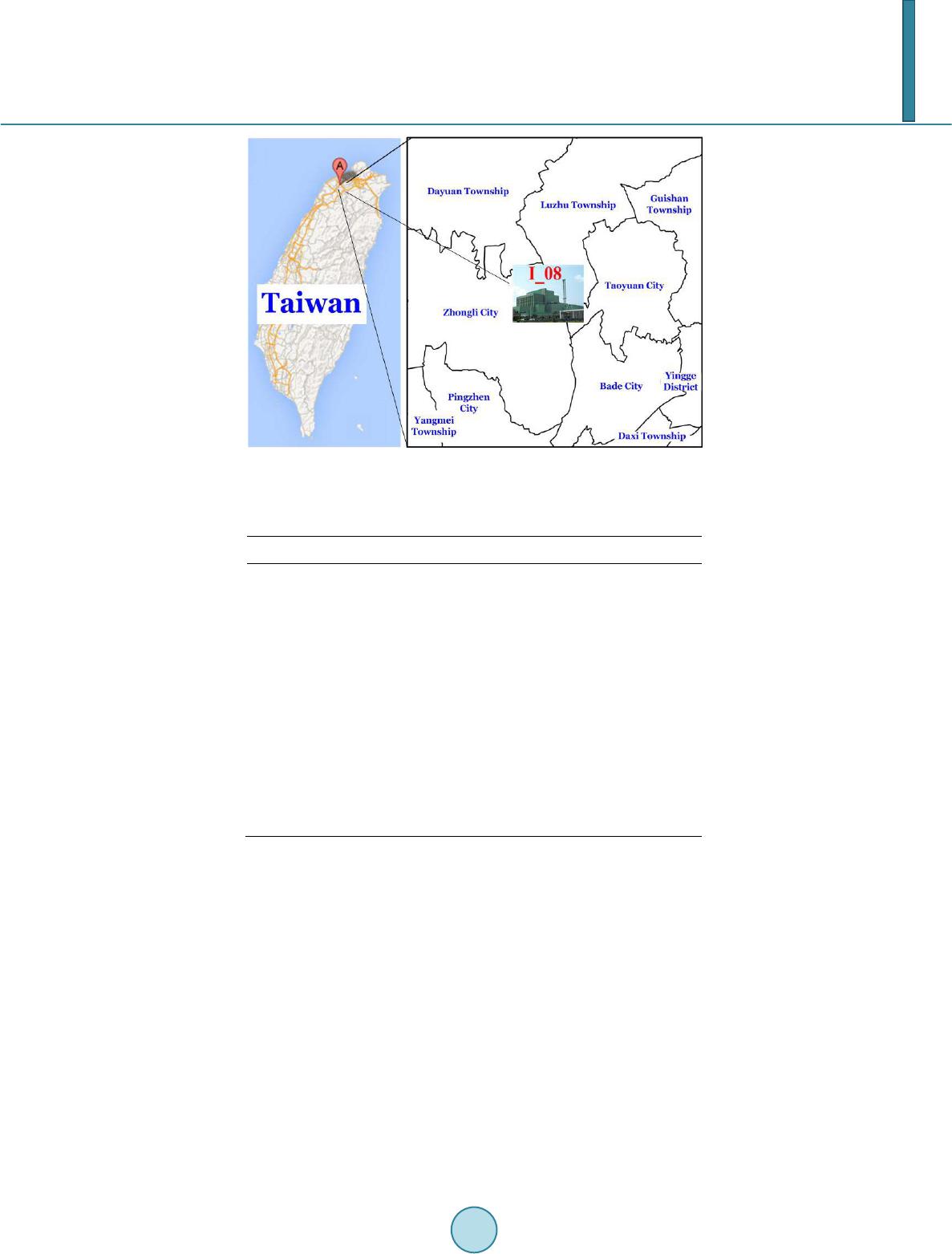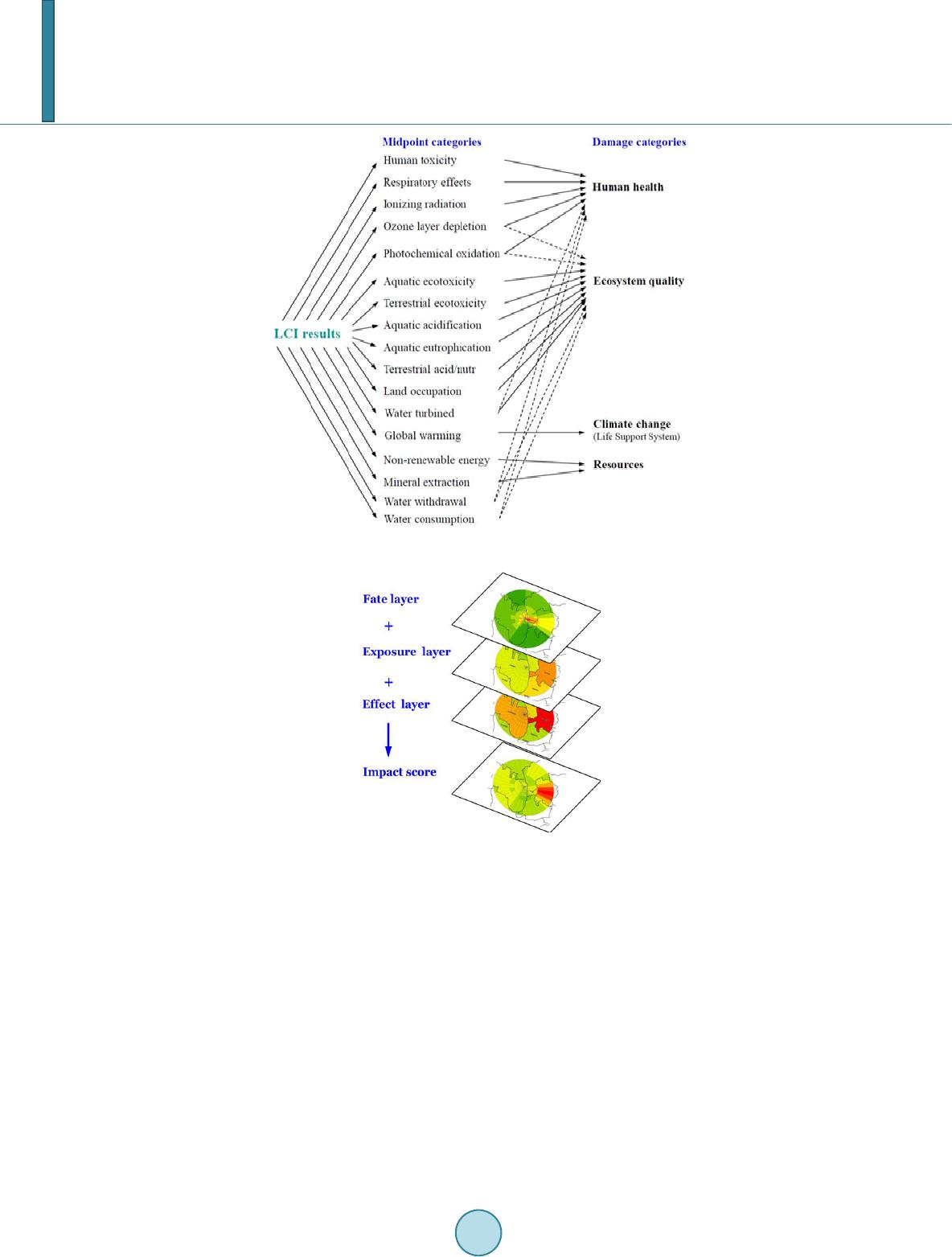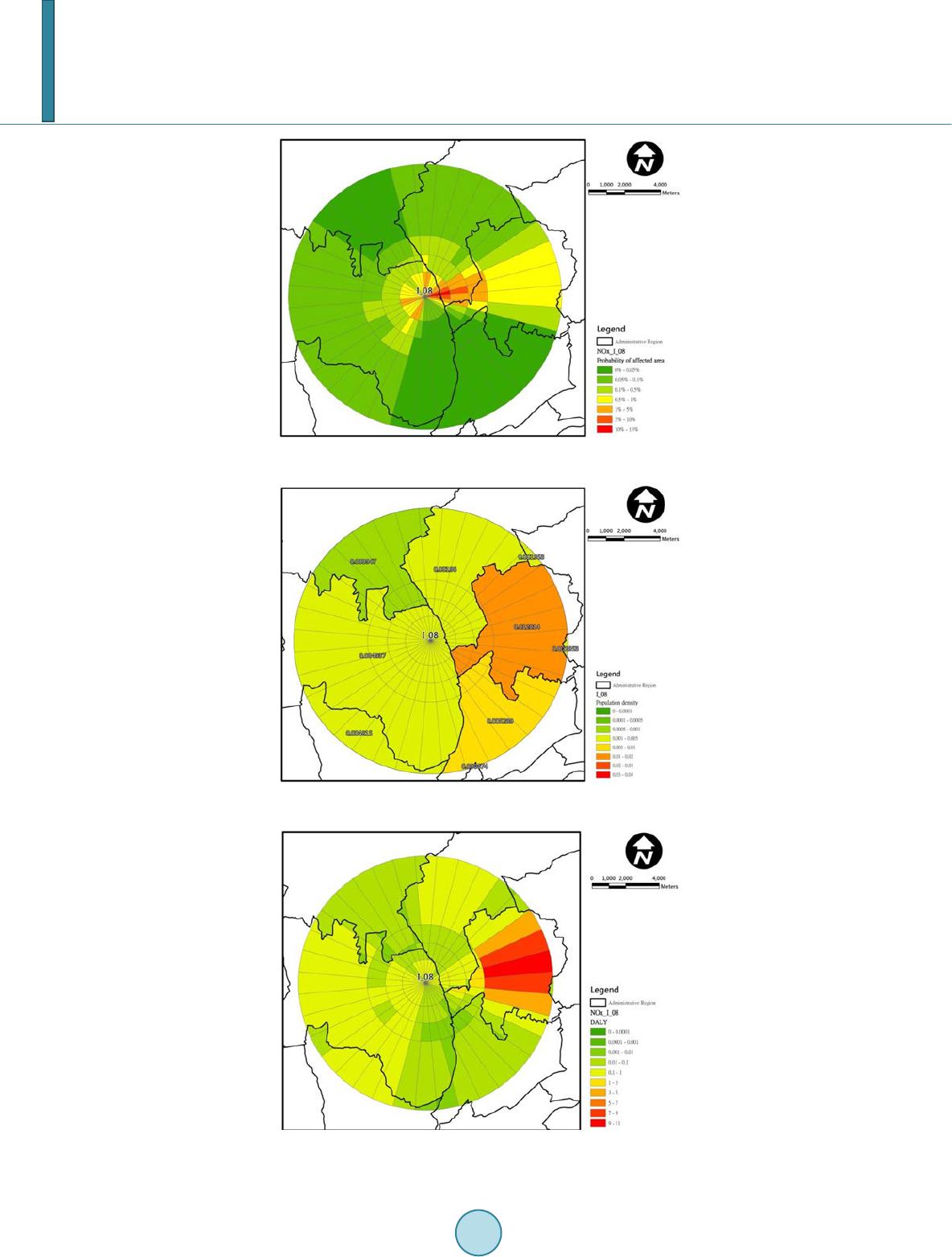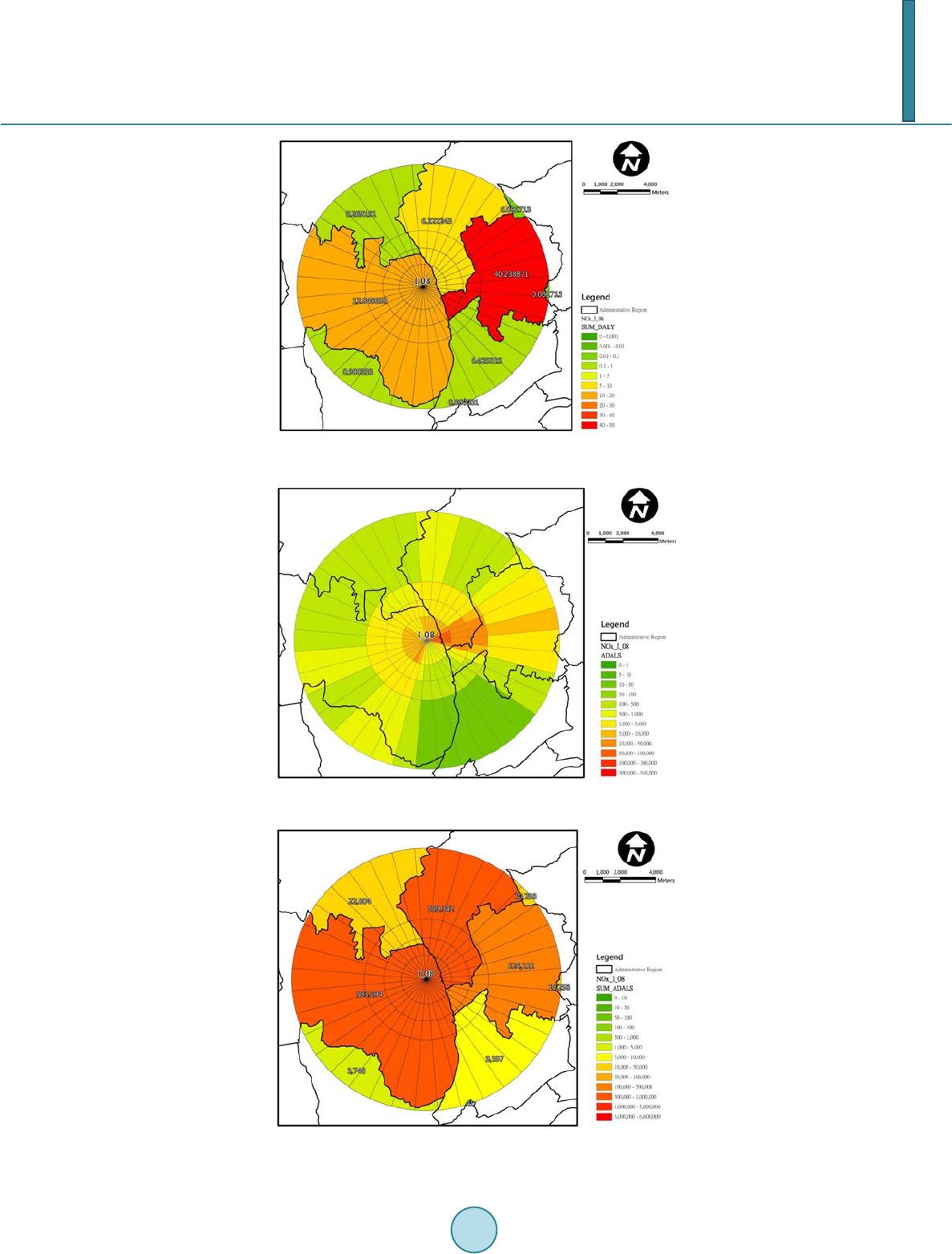 Journal of Geoscience and Environment Protection, 2014, 2, 1-8 Published Online April 2014 in SciRes. http://www.scirp.org/journal/gep http://dx.doi.org/10.4236/gep.2014.22001 How to cite this paper: Liu, K. F.-R. et al. (2014). GIS-Based Regionalization of LCA. Journal of Geoscience and Environment Protection, 2, 1-8. http://dx.doi.org/10.4236/gep.2014.22001 GIS-Based Regionalization of LCA Kevin Fong-Rey Liu1, Ming-Jui Hung1, Po-Chung Yeh1, Jong-Yih Kuo2 1Department of Safety, Health and Environmental Engineering, Ming Chi University of Technology, Taipei, Taiwan 2Department of Science and Information Engineering, National Taipei University of Technology, Taipei, Taiwan Email: kevinliu@mail.mcut.edu.tw Received Dec emb er 2013 Abstract Although LCA is normally not focused on the local impacts for a product system, but when LCA is applied to other environmental system analysis tools the local impact may be important, such as the Strategic Environmental Assessment (SEA). In this study, the regionalization of LCA refers to the conversion of the results from site-generic or site-dependent LCIAs into smaller spatial units. The regionalization of LCAs is achieved by a geographic information system (GIS). GIS can easily allocate the impact into smaller spatial units through the overlay analysis of fate, exposure and effect layers. Keywords Life Cycle Impact Assessment; Geographic Information System; Strategic Environmental Assessmen t 1. Introduction A life-cycle assessment is a technique to assess the environmental impact that is associated with all of the stages of a product’s life, from raw material extraction through materials processing, manufacture, distribution, use, repair and maintenance, and disposal or recycling. According to the ISO 14040 (2006) and 14044 (2006) stan- dards, a Life Cycle Assessment has four distinct phases. The first phase is “Goal and scope”, which requires an explicit statement of the goal and scope of the study. It establishes the context of the study and explains how and to whom the results are to be communicated. The second phase is a “Life cycle inventory (LCI)”, which in- volves the creation of an inventory of the flows from and to nature for a product system. Inventory flows include inputs of water, energy and raw materials, and releases to air, land and water. The third phase is a “Life cycle impact assessment (LCIA)”, which evaluates the significance of any potential environmental impact, based on the LCI flow results. A classical LCIA consists of the following mandatory elements: selection of impact cate- gories, category indicators and characterization models. In the classification stage, the inventory parameters are sorted and assigned to specific impact categories. In impact measurement, the categorized LCI flows are cha- racterized, using one of many possible LCIA methodologies, into common equivalence units that are then summed to provide an overall impact category total. The last phase is “Interpreta tio n”, which is a systematic technique that identifies, quantifies, checks, and evaluates information from the results of the life cycle invento- ry and/or the life cycle impact assessment. The results of the inventory analysis and impact assessment are  K. F.-R. Liu et al. summarized during the interpretation phase. ISO 14040 states that the mandatory steps for an LCIA are impact category selection, classification, and cha- racterization. The characterization factors convert and combine the LCI results into representative indicators of impacts to human and ecological health. The characterization factors can be site-generic, site-dependent, and site-specific (Table 1) (Potting & Hauschild, 2006). • Site-generic LCA. There is no difference in the locations of sources or receiving environment due to the lack of spatial information and the assumption of globally homogeneous effects. • Site-dependent LCA. Some spatial information in sources and receiving environment determines the impact. Sources are typically defined at the level of countries or regions within countries (scale 50-500 km). The re- ceiving environment is typically defined at 5 - 150 km. Site-specific LCA. A very detailed spatial differentiation is performed by considering in sources and receiving environment at specific locations. This requires local knowledge about the fate, exposure and effect of a pollu- tant. The site-specific methods can be considered as the traditional modeling methods, which require a large amount of time, effort, and money. In this study, the regionalization of LCA refers to the conversion of the results from site-generic or site-de- pendent LCIAs into smaller spatial units, focusing on local impact. Although LCA is normally not focused on the local impacts for a product system (Potting & Hauschild, 2006), but it is important when applied to other analysis tools such as the strategic environmental assessment (SEA). SEA is a procedural tool to facilitate early and systematic consideration of potential environmental impacts in policies, plans and programmes. Geographic information system (GIS) integrates hardware, software, and data for capturing, managing, ana- lyzing, and displaying all forms of geographically referenced information. In this study, the regionalization of LCAs is achieved by a geographic information system (GIS). GIS can easily allocate the impact into smaller spatial units through the overlay analysis of fate, exposure and effect layers. 2. Material and Methods 2.1. Case Study The study case is an incineration plant for municipal solid waste and located in Taoyuan County of Taiwan, as shown in F ig ur e 1. Its neighboring townships are Dayuan Township, Zhongli City, Pingzhen City, Yangmei Township, Bade City, Daxi Township, Yingge District, Taoyuan City, Guishan Township, and Luzhu Township and their areas, populations and population densities are shown in Table 2. The incineration plant covers an area of 3.1 hectares. There are two furnaces in the incineration plant. The processing capacity of each furnace is 675 tons/day, and its design heat value is 2300 kcal/kg. In each year, its emissions of SOx, NOx, TSP, HCl, As, Cd, Cr, Pb, CO and CO2 are 365,697.33, 684,388.69, 408,708.01, 55,465.59, 12.07, 3.12, 25.78, 57.58, 2,397.07 and 1.31 × 108 kg, respectively. 2.2. Life Cycle Impact Assessment IMPACT 2002+ (Jolliet et al., 2003) is an impact assessment methodology originally developed at the Swiss Federal Institute of Technology—Lausanne (EPFL), with current developments carried out by the same team of researchers now under the name of ecointesys-life cycle systems (Lausanne). The present methodology proposes a feasible implementation of a combined midpoint/damage approach, linking all types of life cycle inventory results (elementary flows and other interventions) via 14 midpoint categories to four damage categories, as Table 1. The spatial resolution for spatial differentiation in LCA. Spatial differentiation Source Receiving environment Site-generic • Globe • Globe Site-dependent • Countries • Regions within countries • 50 - 500 km • 5 - 150 km Site-specific • At specific locations • <10 km  K. F.-R. Liu et al. Figure 1. An incineration plant for municipal solid waste (Taiwan). Table 2. The neighboring townships of the case study and their areas, populat- ions and population densities. Township Area (m2) Population Population density Dayuan Township 87,097,943 82,495 0.000947 Zhongli City 76,111,210 375,738 0.004937 Pingzhen City 43,447,999 209,189 0.004815 Yangmei Township 89,645,651 153,992 0.001718 Bade City 33,779,044 178,670 0.005289 Daxi Township 105,166,183 91,916 0.000874 Yingge District 21,892,512 88,122 0.004025 Taoyuan City 34,365,351 412,859 0.012014 Guishan Township 71,434,193 139,478 0.001953 Luzhu Township 74,576,566 146,207 0.001960 shown in Figure 2. Damages to Human Health are expressed as DALY (Disability Adjusted Life Years). Dam- ages to Ecosystem Quality are expressed as the percentage of species that have disappeared in a certain area due to the environmental load (PDF). 2.3. GIS-Based Regionalization of LCA The regio naliza tion of a LCA has been addressed in literature (Jolliet, et al., 2003; Nansai, et al., 2005; Mutel & Hellweg, 2009; Mutel, et al., 2012; Mutel, et al., 2013). But the regionaliza tion of a LCA result is defined com- pletely differently. It depends upon some relevant factors, which are categorized into three groups: fate-, expo- sure- and effect-related. The fate factors refer the factors influence the transferring and distribution of a pollutant, including geographical conditions, meteorological conditions, the background level, etc. The exposure factors refer to the conditions involving the existence of environmental impact receptors, such as human, animal, or a protective zone. The effect factors refer to the sensitivity of the receptors to the pollutant. These factors are geo- graphy-related and then can be displayed on the GIS layers, as shown in Figure 3. The impact score is calculated by the exposure and effect factors, such as Impact Scoreijk = Fatei × Exposurej × Effe ctk. Finally, the allocation of a LCIA result for each spatial unit (ijk) is based on the impact score.  K. F.-R. Liu et al. Figure 2. Framework of IMPACT 2002+ (Jolliet, et al., 2003). Figure 3. Impact score: the combination of fate, exposure and effect factors. 3. Results and Discussion 3.1. Fate Layer Fate analysis links an emission (expressed as mass) to a temporary change in concentration. Firstly, the disper- sion of NOx emission is carried by the Gaussian diffusion model, as shown in Figure 4. For simplification, the oval in Figure 4 is approximately covered into a circular sector, as shown in Figure 5. Secondly, the surface wind rose is considered because the transportation of NOx emission is influenced by the meteorological condition, as shown in Figure 6. Thirdly, the combination of Figure 5 and Figure 6 is a probability of affected area, as shown in Figure 7. 3.2. Exposure Layer Exposure analysis links this temporary concentration to a dose. For the respiratory effect, the receptors are hu- man. The population density will influence the allocation of the LCIA result, which means higher population  K. F.-R. Liu et al. Figure 4. The dispersion of NOx emission using the Gaussian diffusion model. Figure 5. A circular sector to approximately represent the dispersion of NOx emission. Figure 6. The surface wind rose. density should be obtained more DALY. The population density of the case study is shown in Figure 8. 3.3. Combin at i on Effect analysis links the dose to a number of health effects, like the number and types of cancers. But in this study, effect analysis is neglected in the procedure of the regionalization. The impact scores for DALY and ADALY (Average DALY, DALY per person) caused by the respiratory effects are calculated, their results are shown in Fig ures 9-12. Fig ur e 9 represents the distribution of the DALY caused by respiratory effect; Figure 10 refers to the distribution of the DALY over townships; and Figure 11 shows the distribution of the ADALY caused by respiratory effect. 4. Conclusion This study proposed a novel concept—the regionalization of the existing LCA methods. Although LCA is nor- mally not focused on the local impacts for a product system, but it is important when applied to the strategic en- vironmental assessment (SEA). This study uses a geographic information system (GIS) to regionalize LCAs be- cause it can easily allocate the impact into smaller spatial units through the overlay analysis of fate, exposure and effect layers. The case study shows that the method can appropriately allocate the DALY caused by respira- tory effect into eight neighboring townships, based on their meteorological conditions and population density.  K. F.-R. Liu et al. Figure 7. Probability of affected area. Figure 8. Population density in the affected area. Figure 9. The distribution of the DALY caused by respiratory effect.  K. F.-R. Liu et al. Figure 10. The distribution of the DALY over townships. Figure 11. The distribution of the ADALY caused by respiratory effect. Figure 12. The distribution of the ADALY over townships.  K. F.-R. Liu et al. Acknowledgem ents The authors would like to thank the National Science Council of the Republic of China (Taiwan) for financially supporting this research under Contract NSC 102-2221-E-131-010-003. References ISO 14040 (2006a). Environmental Management—Life Cycle Assessment—Principles and Framework. Geneve: Internation- al Organisation for Standardisation (ISO). ISO 14044 (2006b). Environmental Management—Life Cycle Assessment—Requirements and Guidelines. Geneve: Interna- tional Organisation for Standardisation (ISO). Jolliet, O., Margni, M., Charles, R., Humbert, S., Payet, J., Rebitzer, G., & Rosenbaum, R., (2003). IMPACT 2002+: A New Life Cycle Impact Assessment Methodology. The International Journal of Life Cycle Assessment, 8, 324 -33 0. http://dx.doi.org/10.1007/BF02978505 Mutel , C. L., & Hellweg, S. (2009). Regionalized Life Cycle Assessment: Computational Methodology and Application to Inventory Databases. Environmental Science & Technology, 43, 5797-5803. http://dx.doi.org/10.1021/es803002j Mutel , C. L., de Baan, L., & He l lweg, S. (2013). Two -Step Sensitivity Testing of Parametrized and Regionalized Life Cycle Assessments: Methodology and Case Study. Environmental Science & Technology, 47, 5660-5667. http://dx.doi.org/10.1021/es3050949 Mutel , C. L., Pfister, S., & Hell weg, S. (2012). GI S-Based Regionalized Life Cycle Assessment: How Big Is Small Enough? Methodology and Case Study of Electricity Generation. Environmental Science & Technology, 46, 1096-1103. http://dx.doi.org/10.1021/es203117z Nansai, K., Moriguchi, Y., & Suzuki, N. (2005 ). Site-Dependent Life-Cycle Analysis by the SAME Approach: Its Concept Usefulness, and Application to the Calculation of Embodied Impact Intensity by Means of an Input-Output Analysis. En- vironmental Science & Technology, 39, 73 18-73 28. http://dx.doi.org/10.1021/es047951n Potting, J., & Hauschild , M.Z. (2006). Spatial Differentiation in Life Cycle Impact Assessment: A Decade of Method De- velopment to Increase the Environmental Realism of LCIA. The International Journal of Life Cycle Assessment, 11, 11-13. http://dx.doi.org/10.1065/lca2006.04.005
|